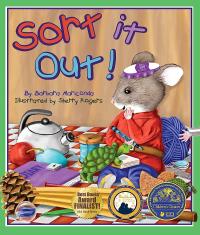
This picture book is a humorous introduction to sorting and classifying. Packy the Pack Rat comes home with a cart full of things — a locket, a book, an umbrella, a pinecone, and other random items. After his mother asks him to put it away, Packy begins sorting things with similar characteristics, such as color, shape, or where they were found. Children who like to collect may be inspired to bring order to their own treasures.
Sort It Out!

A young girl explores Arizona’s Sonoran Desert, recording her thoughts, scientific facts, questions, and experiences in a nature journal decorated by her paintings of the native plants and animals. This book is a great way to introduce kids to scientific journals and the importance of close observation.
Same Same
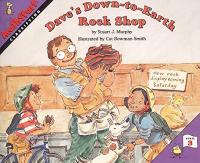
After Josh receives a strange rock from his uncle, he consults a rock shop owner expert to learn about his unusual gift. Josh notices that the store’s display window features stones arranged by size, and as his knowledge of geology grows, he sees the classification schemes in the window becoming more and more complex.
Dave’s Down-to-Earth Rock Shop

Learn the units of measure (including the metric system) by comparing the lengths to fingers, arms, feet, and other body parts. You’ll find lots of examples of how we use measurement in everyday activities as well as hands-on activities, such as asking the reader to see how tall you are using units of measure from ancient Egypt.
How Tall, How Short, How Far Away?

Lisa has an important homework assignment — to measure something in several different ways. She has to use standard units like inches and nonstandard units like paper clips to find out height, width, length, weight, volume, temperature, and time. Lisa decides to measure her dog, Penny, and finds out … Penny’s nose = 1 inch long, Penny’s tail = 1 dog biscuit long, and Penny’s paw print = 3 centimeters wide … and that’s only the beginning! Lisa learns a lot about her dog and about measuring, and even has fun doing it.
Measuring Penny

Two friends practice their estimating skills on their way to a store that’s having a contest to figure out how many jellybeans are in the jar.
Betcha! Estimating
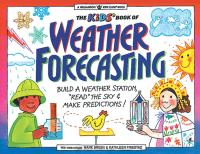
In this hands-on science book, kids learn how to make a barometer, record their observations in a Weather Log, use graphs and charts, read the cloud and wind direction, and look to the sunset glow to make more accurate predictions.
The Kid’s Book of Weather Forecasting

Read and find out about how to track animals by finding footprints and other clues. Does a cat use her claws when she walks? How does a rabbit run? What does a skunk smell like? Find out the answers in Big Tracks, Little Tracks, a perfect first book for children with a budding interest in animals and nature.
Big Tracks, Little Tracks

A story about a close-knit community of enslaved African Americans on a plantation in Texas, the day before the announcement is to be made that all enslaved people are free. Young Huldah, who is preparing to celebrate her tenth birthday, can’t possibly anticipate how much her life will change that Juneteenth morning. The story follows Huldah and her community as they process the news of their freedom and celebrate together by creating a community freedom flag. Each of the illustrations has been hand-sewn and quilted by the author and artist Kim Taylor.
A Flag for Juneteenth

Eight-year-old David and his family gather at Grandma’s house in Galveston, Texas, for a cherished family tradition: Grandma’s annual retelling of the story of Juneteenth, the holiday that commemorates the end of slavery in the United States. The story is written in the same rhythm as The Night Before Christmas, and is a great read aloud choice.
The Night Before Freedom: A Juneteenth Story

A young Black child experiences the magic of the Juneteenth parade for the first time with their family as they come to understand the purpose of the party that happens every year — and why they celebrate their African American history! The poetic text includes selected lyrics from “Lift Every Voice and Sing,” the unofficial Black National Anthem, and the vibrant art illuminates the beauty of this moment of Black joy, celebrated across the nation. This vibrant adventure through the city streets invites young readers to make a joyful noise about freedom for all.
Juneteenth: A Picture Book for Kids Celebrating Black Joy

This wordless picture book with Baker’s characteristically beautifully detailed collage illustrations conveys a subtle message about how we can bring positive change to our communities. Every double-page spread is a view through the same window, a view that changes over a generation. Children can share what they think is happening to the neighborhood based on the illustrations.
Home

A Siberian tiger cub named T.J., born at the Denver Zoo, is orphaned when he is only a few weeks old. The veterinary staff raises him, feeding him by hand until he is able to eat on his own and return to the tiger exhibit. The story is accompanied by four different types of graphs (picture, circle, bar, and line) that display information about the numbers and types of tigers in the wild, how much T.J. is eating, and his weight compared with other tigers. This is a good introduction to how charts and graphs are used in the real world.
Tiger Math: Learning to Graph from a Baby Tiger
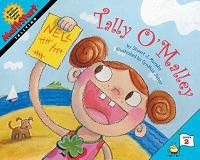
The O’Malley family is off to the beach, but it’s a long, hot, boring drive. What can Eric, Bridget, and Nell do to keep busy? Play tally games, of course — counting up all the gray cars or green T-shirts they see. Whoever has the most marks at the end wins the game. This is a great picture book for teaching data collection and tallying. It also gives kids a head start in counting by fives and is a good basis for charts and graphs.
Tally O’Malley

Four best friends start a lemonade business and make a bar graph to chart their growing sales. After three days the friends notice that their sales suddenly drop and investigate to find out why. After discovering that the competition is a new kid with a great juggling act just down the street, they ask him to perform beside the lemonade stand and then watch sales increase “over the top.”
Lemonade for Sale
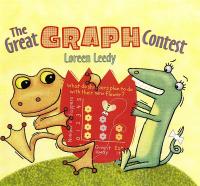
Chester the snail sets up a contest between his friends Gonk the toad and Beezy the lizard to see who can make the best graph. Points will be given for correct math, creativity, and neatness. Beezy and Gonk explore information collection (tallies and surveys) and the use of graphic organizers (Venn diagrams, quantity graphs, circle graphs, picture graphs, and bar graphs). In the end, kids can look at Chester’s graphically designed score sheet and see that the result is a tie.
The Great Graph Contest
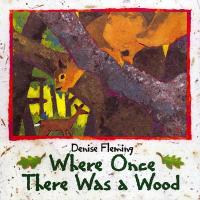
A powerful poem and stunning, handmade-paper art encourage children to protect nature.
“Where once there was a wood,
A meadow and a creek … “
Inspired by events in her own backyard, award-winning author and illustrator Denise Fleming creates a poignant yet hopeful portrait of our disappearing natural environment. The last pages of the book teach children how to make a more “creature friendly” backyard, including information about what types of food, trees and flowers attract different kinds of animals.
Where Once There Was a Wood
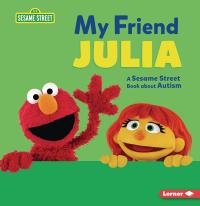
Meet Julia! Julia is an autistic girl who loves art and her family. Join Elmo, Abby, and the rest of the Sesame Street crew as they introduce Julia and all the things that make her special.
My Friend Julia: A Sesame Street Book About Autism

The true story of John Meyers and Charles Bender, who in 1911 became the first two Native pro baseball players to face off in a World Series. This picture book teaches important lessons about resilience, doing what you love in the face of injustice, and the fight for Native American representation in sports.
Contenders: Two Native Baseball Players, One World Series

Aven Green loves to tell people that she lost her arms in an alligator wrestling match, or a wildfire in Tanzania, but the truth is she was born without them. And when her parents take a job running Stagecoach Pass, a rundown western theme park in Arizona, Aven moves with them across the country knowing that she’ll have to answer the question over and over again. Her new life takes an unexpected turn when she bonds with Connor, a classmate who also feels isolated because of his own disability, and they discover a room at Stagecoach Pass that holds bigger secrets than Aven ever could have imagined.
Insignificant Events in the Life of a Cactus

Whether in the sky, on the land, or in the sea, animals live in all sorts of fascinating environments. Discover six of the most intriguing habitats, and have fun pinpointing the camouflaged critters hiding within them in this interactive and informative picture book full of furry, feathery, and ferocious creatures.
I See a Kookaburra! Discovering Animal Habitats Around the World

“I can’t wait for my hair to grow” is the powerful opening to this book, which lays groundwork for this compelling story highlighting not only the significance of hair to Indigenous peoples, but also memory, generational trauma, and the power of healing. Using three generations of hair as the medium, Lindstom’s sparse, poetic language (“Our ancestors say: Our hair is our memories. Our source of strength”) and Littlebird’s bright palette capture both serenity and hope. (School Library Journal)
My Powerful Hair

This book celebrates the magic of discovering your very own poetry in the world around you. “Begin / with a question / like an acorn / waiting for spring.” Written as a step-by-step guide, and using language including “first,” “next,” and “then,” the authors teach the art of poetry. Readers are prompted to first ask a question, and then to “listen to the grass, the flowers, the trees — anything that’s friends with the sun” to create imagery for their poetry. The book teaches poetry by tasking students with exploring nature, questions, and ideas in unique ways.
How to Write a Poem

A book of poems about dancing that mimic the rhythms of social dances from cha-cha to two-step — celebrating all forms of social dance from samba and salsa to tango and hip-hop. The rhythm of each poem mimics the beat of the dances’ steps. The poems create a window to all the ways dance enters our lives and exists throughout many cultures.
